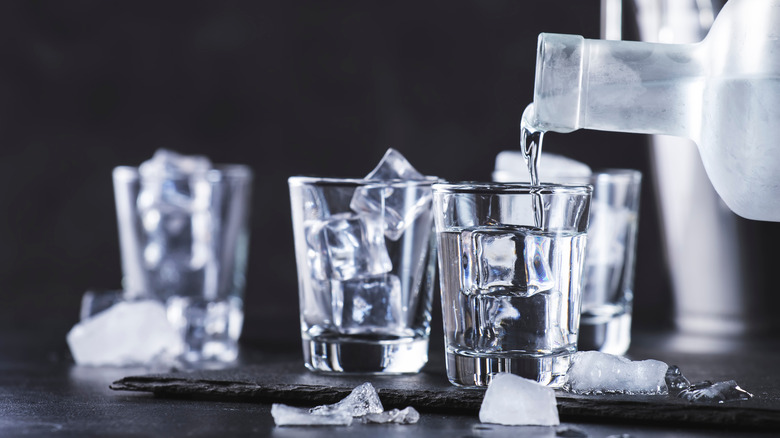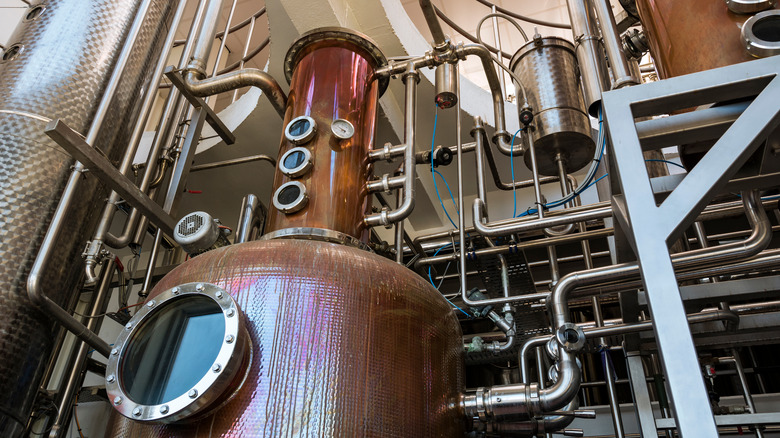Here's How Most Vodkas Are Produced
In 1925, during the height of Prohibition, a member of the Smirnov family who had fled to America from France amid the Russian Revolution sold the exclusive North American rights to his family's vodka in an effort to stay solvent. The man who bought those rights, according to Atlas Obscura, went bankrupt a little more than a decade later. But by then, an American distillery and infrastructure were in place and Prohibition had been lifted. In 1940, a new vodka-based cocktail called the Moscow mule premiered in Los Angeles and was soon popular nationwide.
That's the short version of how vodka, a liquor traditionally made in "vodka belt" countries like Russia and Poland, was launched, and first became popular in America. It's a fascinating story, but a more fascinating one is how vodka continued to grow in popularity — it's currently the nation's most popular spirit, per CNBC – despite being devoid of color and absent any discernible flavor. As MasterClass notes, vodka is essentially made from two ingredients: water and ethanol. You've probably heard that vodka is Russian for water. Not exactly, but it's close.The Russian word for water is voda (via Britannica), and the two words are related.
But let's backtrack a little so we can give a more complete picture of how vodka is produced.
The distillation process for vodka
Vodka is a neutral spirit. What that means, per Ethimex, is that it's made from ethanol, then rectified or diluted with water until it reaches the desired alcohol by volume (ABV) content. The original source of that ethanol can be almost any agricultural product. Some vodkas, for instance, are made with potatoes, but most, MasterClass observes, are sourced from cereal grains like wheat or rye. The potatoes or cereal grains are then fermented with yeast in a mash, before being ran through a sieve to achieve the first iteration of alcohol.
After fermentation is complete, according to MasterClass, the resulting product is then distilled (often multiple times) and later charcoal filtered. Vodka made naturally is basically flavorless, but in recent decades flavored vodkas have become much more popular. So if flavoring ingredients like lemon, orange, or peppercorn are going to be included, this will happen during the distillation process. The typical ABV of most vodkas is at least 40% or 80 proof, notes Britannica, and any necessary dilution is done after the filtration process is complete. Vodka isn't bottle-aged or cask-aged. Instead, is ready to drink as soon as it's bottled.
The neutral character and streamlined distillation process may seem a bit bland, but this is what gives vodka its famed versatility as a cocktail mixer, notes Taste of Home. Vodka goes well with virtually anything. Which come to think of it, is probably the reason it has been so popular for so long.

